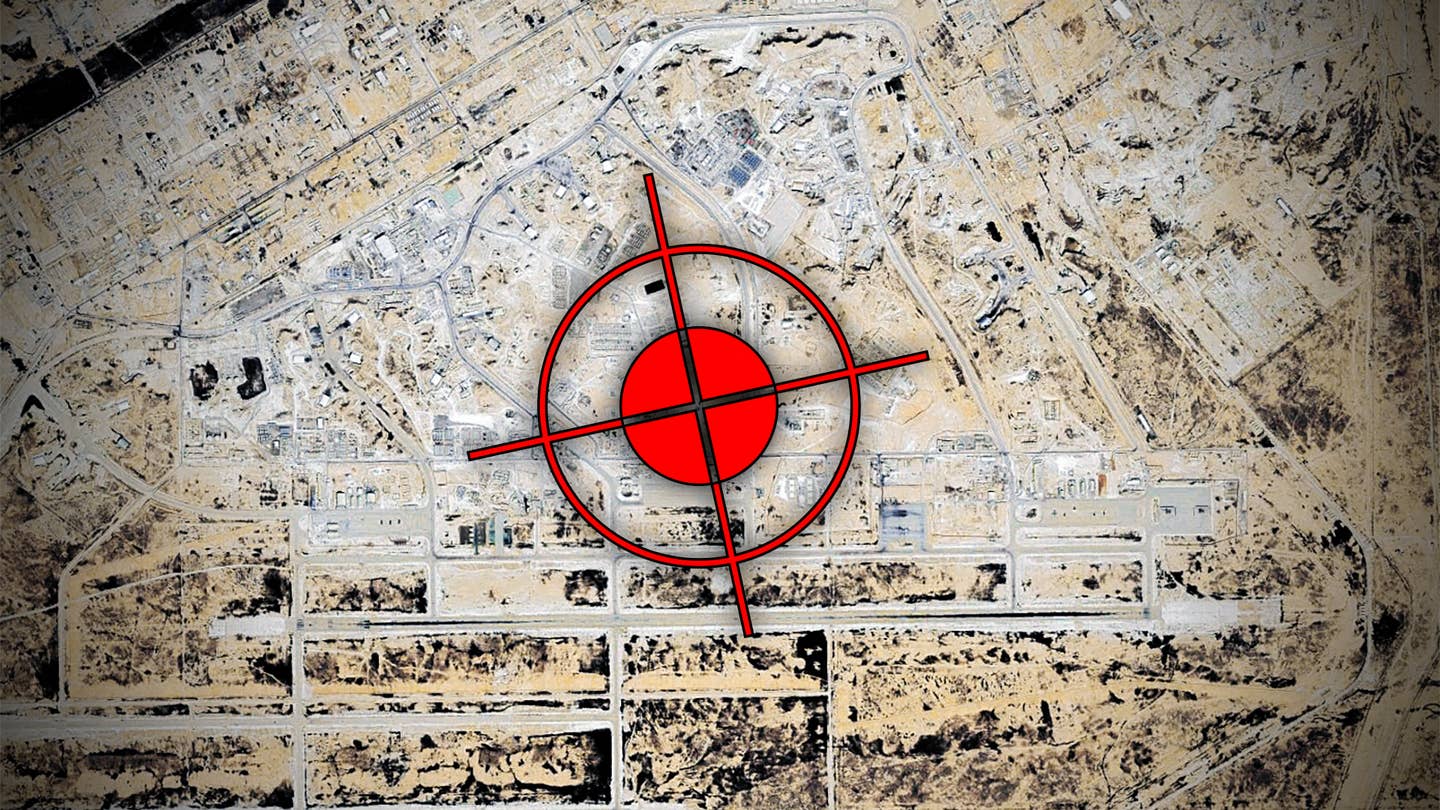The militia attack on Al Assad was the largest yet, meanwhile the campaign to preemptively strike Houthi missiles seems to be gaining steam.

It’s been a very active day in terms of hostilities in the Middle East. Al Assad Air Base in Iraq, where U.S. military personnel and contractors are based, came under a massive barrage from Iranian-aligned militant groups in the country. The attack was so big that reports state it overwhelmed Al Assad’s air defenses, with multiple projectiles landing within its permitter, causing injuries.
The Islamic Resistance in Iraq, which is a blanket moniker for a number of groups hostile to the U.S. and Israel over the war in Gaza, claimed responsibility for the attack. It caused minor injuries to U.S. personnel and seriously injured one Iraqi.
A statement issued by the Islamic Resistance in Iraq reads:
In the name of God, the most gracious, the most merciful
“Permission is given to those who fight because they have been wronged, and indeed, God is Able to grant them victory.”
In continuation of our approach to resisting the American occupation forces in Iraq and the region, and in response to the Zionist entity’s massacres against our people in Gaza, the Mujahideen of the Islamic Resistance in Iraq attacked the occupied Ain al-Asad base in western Iraq with a missile salvo, and the Islamic Resistance confirms its continued destruction of enemy strongholds.
(And victory is only from God. Indeed, God is Mighty, All-Wise)
It remains unclear what exactly was fired at the base, but it does appear that whatever it was — or if it was multiple types of weapons in a layered attack — it taxed on-site air defenses heavily. Either short-range ballistic missiles or heavy artillery rockets are suspected to have been used, both of which these militia groups possess and have used before.
The U.S. has around 2,500 troops in Iraq as part of the anti-ISIS mission there. This would be the 58th attack on U.S. facilities in Iraq since the war between Israel and Gaza lit off after Hamas’s cross-border terror attacks on October 7th, according to Reuters.
Also something to keep an eye on is a strike today by Israel on five Iranian IRGC commanders in Syria, something Iran is now saying they will avenge.
A thousand miles to the south, in and around the Red Sea, it seems clear now that the U.S. is carrying out a sustained hunt aimed at striking the Houthi’s anti-ship weapons prior to launch. Yet another round of preemptive air strikes were carried out yesterday, with three missiles being destroyed. Another missile was hit just hours ago.
We have highlighted just how challenging and resource intensive putting up a major effort to stop most attacks on shipping emanating from Yemen before they occur by hunting for and destroying the weapons themselves. You can read more about this reality here. Regardless, some form of this is now clearly underway.
As always, these are developing stories. We will update this post with major information as it comes available.
UPDATE: 5:36pm PST—
CENTCOM has put out an official statement on the Al Assad Airbase attack. It states ballistic missiles and rockets were indeed used.
Full statement:
“At approximately 6:30 p.m. (Baghdad time) time Jan. 20, multiple ballistic missiles and rockets were launched by Iranian-backed militants in Western Iraq targeting al-Assad Airbase. Most of the missiles were intercepted by the base’s air defense systems while others impacted on the base. Damage assessments are ongoing. A number of U.S. personnel are undergoing evaluation for traumatic brain injuries. At least one Iraqi service member was wounded.”
Now to address some of the rumor mill.
There have been rumblings in the last couple of hours or so about some major escalation in the ongoing crisis between the Houthis and the U.S. and its allies, with unconfirmed indications of what that may be circulating on social media.
There are claims that a Houthi leader, along with two Iranian missile experts, were killed in an airstrike on a military base in Yemen today. This oddly mirrors much of what we discussed in our report above, with the killing of high-ranking military members leading to escalatory reprisal strikes.
Once again, these reports remain unconfirmed and we are looking into them at this time.
There is also talk of the Houthis acquiring new Iranian weapons. This would not be surprising at all and would fit with Iran’s proxy playbook. What these weapons could be is unclear, if they are indeed being supplied. Iran testing newer types in a shooting war would be beneficial to prove those systems and gain real-use data on them in order to rapidly improve them. This could also help sell them to customers, specifically Russia. The jet-powered Shahed suicide drone comes to mind.
In an update to an event that happened on the 18th, the loss of an MQ-9 Reaper over Iraq near Balad, it now looks like it was shot down by militias using an Iranian weapon. This is according to a report by Air & Space Forces. The weapon could be the unique ‘358’ air-to-air loitering munition, which would make good sense and it is thought to be in militia hands, as well as in the Houthi’s arsenal. It is a leading candidate for the downing an MQ-9 over the Red Sea in November, as well. You can read our latest profile on that weapon here.


